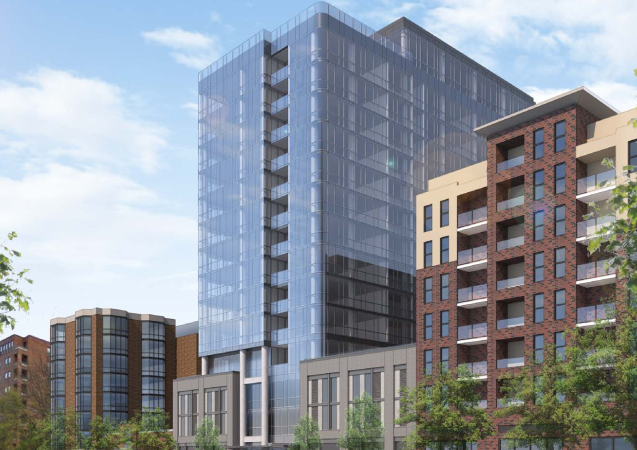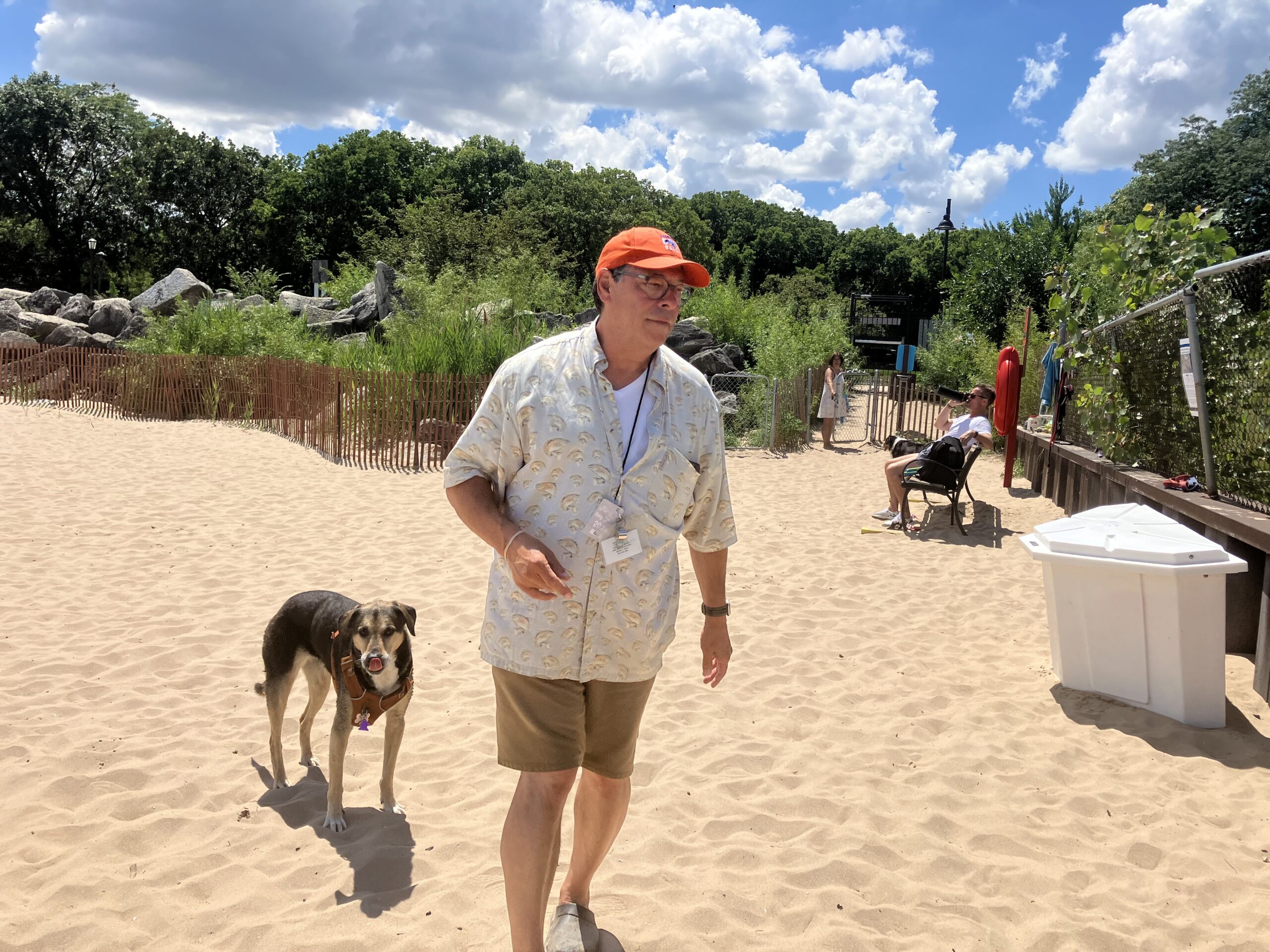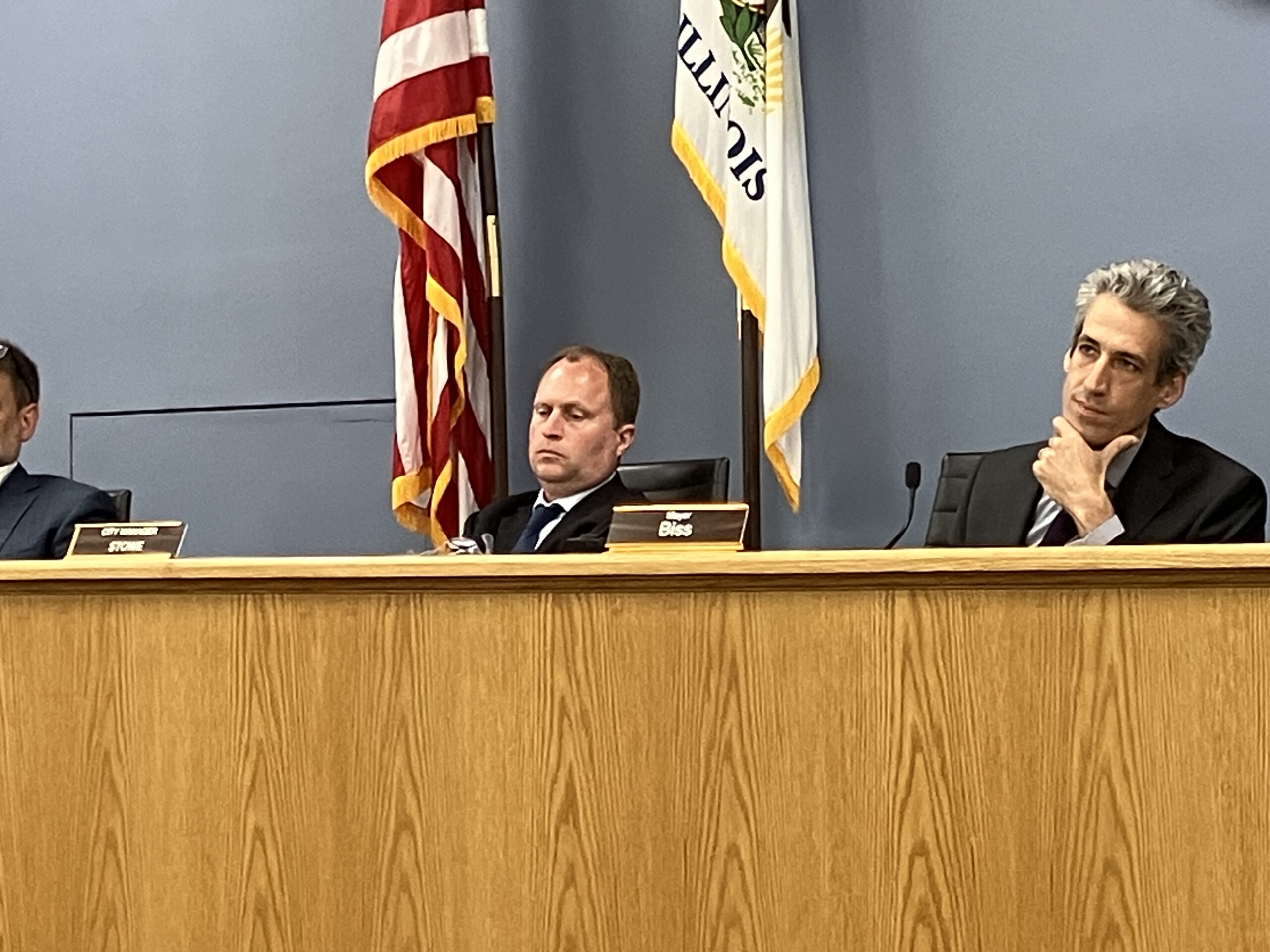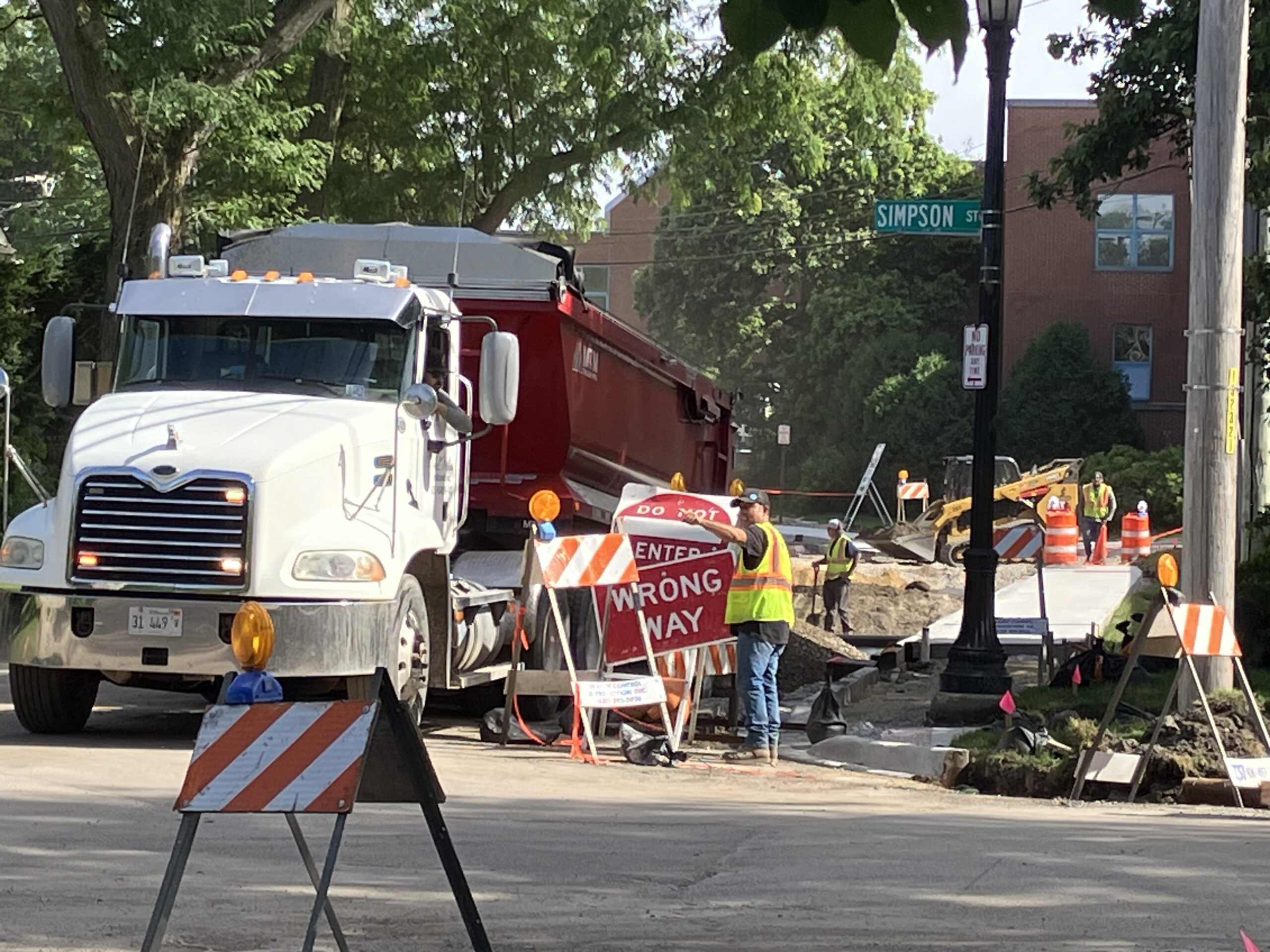By Bob Seidenberg
Some prominent members of Evanston’s design community call for the city to establish a Community Design Commission has been pushed back — perhaps as much as two years.
At the Council’s July 10 Planning & Development Committee meeting, several Council members argued the city shouldn’t tackle the issue until after a Comprehensive General Plan is adopted. The city is just embarking on its first new Comprehensive General Plan as well as a new Zoning Code, a process that could take 24 months
Jack Weiss, a founding member and past president of Design Evanston, a group of design professionals which has played a major role highlighting local examples of good design, argued that was too long to wait.
“Too many important things will occur long before that time and will need to be addressed by the new Community Design Commission,” he told Committee members.
The city has had staff committees, most recently the Design & Project Review Committee, and the Site Plan & Appearance Review Committee, before that, which examined elements of projects such as parking arrangement, circulation, traffic access, landscaping, signage, storm water control, exterior building design and materials.
Design would sometimes come up in those group’s discussions but not as a main focus.
The Community Design Commission would focus on design.
“The perception is that there’s never been professional designers on either committee on a regular basis and that design seems to be an afterthought,” Weiss said, speaking at the June 26 P&D meeting.
The Community Design Commission proposal seeks “to put design in the hands of professionals, architects, designers and others who understand the role design plays in nearly every aspect of the daily life of our community.”
Others who spoke in support of the proposal included David Galloway, vice-president of Design Evanston, and a former member of both the Planning Commission and Preservation Commission, Tom Hofmaier, treasurer of Design Evanston, and also an architect with more than 40 years experience.
Hofmaier told committee members that he supported the development of the Design Commission, not with the wish “arbitrarily restricting design styles,” but rather with the hope of providing “more varied designs through some professional thoughtfulness.”
Discussing the issue, Council member Eleanor Revelle, 7th, wondered what effect a design commission would have had on the Land Use Committee and Council’s decisions concerning the 15-story Legacy Evanston building on Chicago Avenue, whose height and bulk came under criticism from neighboring residents.
“I’m just curious how that would all come to us,” she said, leaving the question without a response.
“I mean, I do like the idea of having beautiful buildings,” she said, adding. “I guess I would feel at this point more comfortable having the concept of a design commission be something that was considered by the Comprehensive Plan process, and that it would be seen as something to be created as part of adopting the comprehensive plan.” Council member Clare Kelly, 1st, originally made the refer to develop a Community Design Commission, with Council members Thomas Suffredin, 6th, and Juan Geracaris, 9th, as co-sponsors.
The referral was proposed to replace some aspects of the City’s code that previously referenced the Design and Project Review Committee (DAPR).
The committee was one the only city committee where members of the public had a chance to sit in on city staff discussions of projects at an early stage of the development process. It was dissolved as a meeting which community members could attend, last year.
In a detailed memo to the P&D committee, City Planner Cade Sterling noted that city staff surveyed nearly two dozen municipalities and their enabling legislation with some kind of design review committees in place.
The list included neighboring Chicago (population 2.697 million in 2021), Urbana, Illinois (pop. 38,681) Madison, Wisconsin (pop. 269,196) Atlanta, Georgia,(pop. 496,461) Palo Alto, California (66,680) and Ann Arbor, Michigan (pop.121,536).
For instance, in Palo Alto, which has an Architectural Review Board, staff found, consideration is given to “consistency with other plans, studies and codes; Creation of an internal sense of order and desirable environment; Preservation of natural and historic features; Scale, mass and character to adjacent land uses; Aesthetic qualities; Transportation best practices; :Sustainability best practices.”
Looking at the role an Evanston design committee might play, Sterling observed “the emphasis of the Commission is on the quality of design and is not a substitute for interdepartmental project review and pre-application conference between staff and potential developers—critical steps to ensure clarity in code requirements and the availability of current City infrastructure to support the proposed development.”
“Although the quality of design cannot be guaranteed by any review process or body, it is more likely to occur when community members, property owners, developers, and designers know it is being sought and encouraged early on,” he wrote, “when its value can be demonstrated, when processes and expectations are transparent, and when significant resources, by way of Evanston’s quality of resident experts in the field of design, planning, and development, are appropriately leveraged and mutually
invested in a project’s success as a partner and not an adversary.”
In his memo, Sterling mentioned the need to coordinate creation of a commission with the Comprehensive General Plan and Zoning ordinance, but spoke of integrating an already functioning commission into consultants work on a Comprehensive General Plan, not after.
“An established Community Design Commission could be a valuable resource in the development of these documents and help integrate the goals and objectives of the proposed Commission’s framework into policy statements and initiatives for consideration as well as ensure the new zoning ordinance facilitates the type of built environment and design decisions that are desired,” he wrote. “Alternatively, the consultants hired to prepare the Comprehensive General Plan and zoning ordinance could further envision and refine the framework for this Commission, assess its need and viability, and review its role in the future entitlement process—ensuring conflicts don’t exist between the Commission’s enabling legislation and the goals of these planning processes.”
Some Evanston design advocates have lobbied since the mid-1980s for a binding appearance body which could rule out ugly development that overwhelms or changes the look of neighborhood, a look at past coverage shows.
Staff, in fact, at one time recommended that SPARC be allowed to make binding appearance decisions, and sought two architects on its panel.
However, the proposal came under strong criticism from quarters of the business, maintaining that appeals of decisions would take too long in the world of development.
At the July 10 meeting, Council member Kelly who had made the original referral that the city consider establishing a Community Design Commission, said she envisioned the group being advisory as DAPR was. The group would be comprised of resident experts who care about our city and live here.
“It also brings focus and attention to how much we care about designing Evanston, about creating a city that is attractive and more than meshes well” with the surrounding streetscape.
She noted that “some cities have competitions every year on the best designs that’s sponsored often by these design commissions. So I think it just really lends itself to creating a more attractive city.”
Council member Jonathan Nieuwsma, 4th, chairing the committee, referred back to Revelle’s earlier question, whether having a design commission would have influenced The Evanston Legacy project as presented.
“To that particular case,” he said, “the developers did not take input from conversations with Council members directly prior to that (their submitting the proposal.) I suspect ‘no’ would be the answer in that case.
Nieuwsma admitted he was kind of conflicted on the question, “because I 100% understand and support the (need) to have some kind of thoughtful approach to urban design. And I made that point in the discussion of the Evanston Legacy project a couple of weeks ago. It’s in our community’s best interest to have some firm guidelines in place that allow developers a clear delineation of what’s acceptable, and some things are easy to quantify, like building hight, floor area ratio.”
“When it comes to esthetics,” he said, “kind of by definition that is hard to quantify — difficult, if not impossible to quantify. And so while understanding the need to have a beautiful downtown, who gets to describe what that means?”
He said, “I don’t think it would be productive to have one architect arguing for Ionic columns and the other architect arguing for Doric columns.
“So I’m just concerned about creating a committee that’s the Taste police, as having that not be a productive part of this process,” he said.
His answer was ‘yes,” meanwhile to waiting until after the Comprehensive General Plan and new Zoning Ordinance was completed before tackling the question.
“We’re going to have a lot of public input,” he said. “And then let’s see where we’re at.”
Council member Devon Reid’s concern was that if the city does create such a Commission, that their are very clear guidelines, expressing concern of making the process more political, “and making Evanston potentially a more unfriendly place for folks to come and develop. But as long as it is created in a very thoughtful body that uses this body as DARP was previously used, yes, then I’m fine with it,” he said.
Noting that the item was set for discussion, Kelly argued that it should be brought back at a future P&D meeting in a few months, allowing more robust discussion.
“I don’t think we should wait for a comprehensive plan to be completed, which could take a couple of years.
“This is something that i feel many people in this city feel was needed a long time ago,” she said.
She made a motion that the issue come back to the committee, in time for P&D’s meeting at the end of August.
Nieuwsma argued against the moving, maintaining, “we’d just have essentially the same discussion in a few months.”
He argued that “we should pause this conversation until the Comprehensive Plan process is played out.”
“So I think the next step here is some offline conversation, and then when there is enough consensus to move this to the next step, whatever that might be, or when someone’s chair (chair of the committee) wants to move forward at this time.”
There was no further vote on that direction, and the meeting was adjourned.




